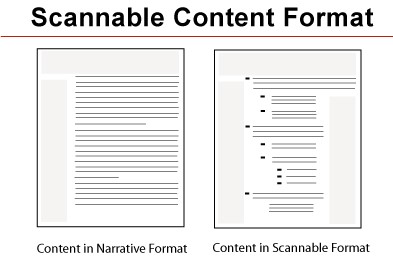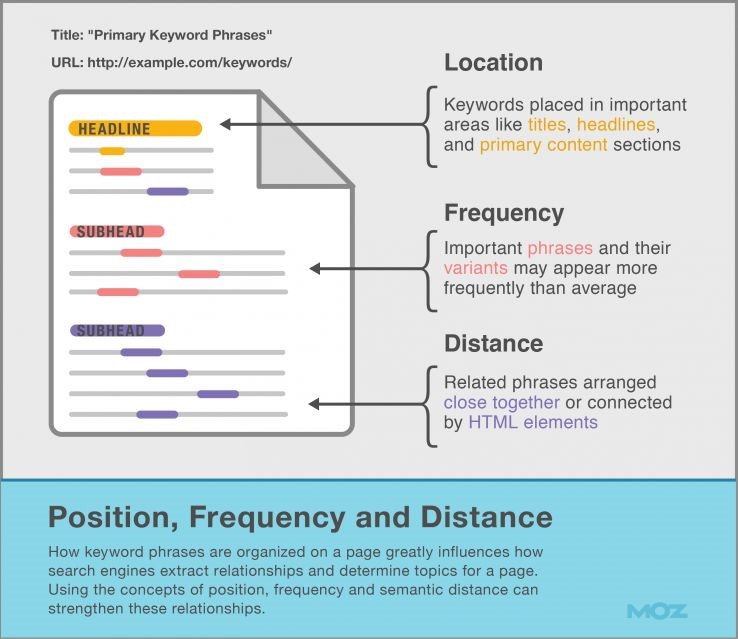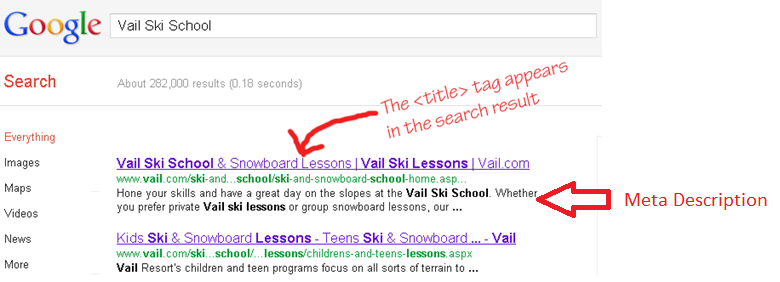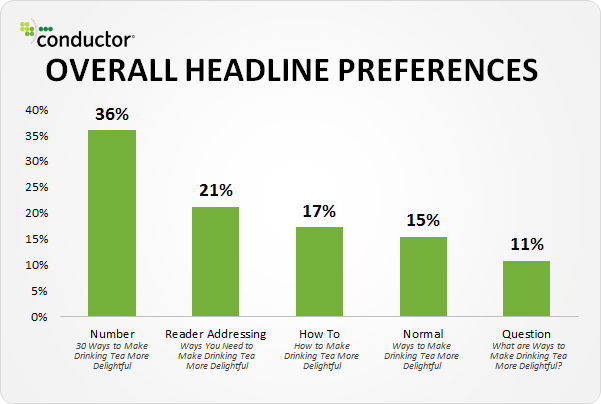What is SEO Copywriting?
SEO copywiting is very different from copywriting.
Copywriting is designed to get the reader to take a specific action. Sometimes that’s making a purchase, calling for more information, confirming an email opt-in, or checking out your store’s merchandise.
SEO copywriting is writing copy with the intention to rank well in Google and other search engines. You need to help Google associate your page with the phrases people are actually searching for
That’s what effective SEO copywriting does – it tells Google which words are the most relevant ones to the people you want to reach. So, with SEO copywriting you can achieve high search engine ranking and also satisfy your customers.
In order for your site to grab your visitors’ attention and attract traffic, your content must be engaging as well as optimised for search engines. This is where the art and science of effective SEO copywriting come into play.
In this article we will show you how to apply good SEO content writing strategies that invites visitors to engage with your business, whilst increasing brand visibility.
Read our Small Business SEO Strategies blog post.

Image: www.orangesnowman.com
Elements of Good SEO Content Writing
Write for an Online Audience
When writing effective web copy, it’s important to remember that online readers act differently to offline readers. People who read web content:
- Are purpose driven: They want to find information and get things done. As a result, they will only read content that is relevant to their original search queries.
- Scan and skim: Their pace of reading is faster than when reading print. They rarely read a whole article, but instead tend to scan a piece of text to establish whether the information is relevant.
- Follow an F-shaped pattern: Eye-tracking studies show that online users tend to read a web page in an F-shape pattern. They read the top of a page horizontally and then move their eyes down the left-hand side of the page.

Keywords for Website Optimisation
Before you can start optimising your website’s content you need to establish a list of keywords or phrases that users might search to find content related to your website.
If you are not yet comfortable with the keyword research process you might want to read our Ultimate Guide to Keyword Research.
Users want a well-structured piece of content that has a relevant connection to the keywords they searched for.
In order to choose the most appropriate keyword phrases ask yourself: “What are the relevant questions that users are asking that my content and business solution answer?”
Once you have your keywords, keep keyword density in mind as you write the content. Keyword density refers to the number of times an identified keyword appears within a given piece of text relative to the entire length of that text.
The best keyword density for SEO is:
- One keyword in your URL
- One keyword in your meta description, so that your content will appear more relevant in searches
- One keyword in your title
- One keyword in your headline and in subheadings
- Two to three keywords in your content, depending on the length of your content
- One keyword in your alt image
- One keyword in your image name

Image: www.moz.com
Title Tags and Meta Descriptions
Title tags define the title of your document and are used to briefly and accurately describe the topic and theme of your content.
- Use a punchy title that includes your most important keyword(s)
- Place these keywords to the front of your title tag
- Shorter is better. Google typically displays the first 50 to 60 characters of a title tag
- Keyword(s) used in your title tag should also be found on your site

The purpose of your meta description tag is to provide a brief and concise summary of your website’s content. They are commonly used on search engine result pages (SERPs) to display preview snippets for that given page.
This snippet generally influences whether or not you get a click. Try to keep your meta description under 165 characters so the full description is visible in search results.
Copywriting Headlines and Subheadings
One of the most important elements of your landing page is your headline. Your headline is the first, and perhaps only, impression you make on a prospective reader.
- Your headline should include a primary keyword and secondary keyword
- Be clear and concise. Don’t use overly dramatic or quirky words, be straightforward
- The headline should be placed where it is easily identifiable, at the top of your page
- Readability. The size, type and colour of your headline should match the theme of your site
Subheadings help capture and maintain the reader’s attention. With subheads you are “selling” the reader on continuing to read a mini-headline.
A good SEO copywriter uses subheadings to summarise benefits to the reader through a sensible sequence of events, effectively moving the reader forward. In this way, a visitor will remain on your page for a longer period of time.
Use subheads to summarise the main benefits discussed and include keywords and phrases if possible. Back up your main benefits with supporting points illustrated by the use of bullet points or numbered lists.
The use of subheads will make your article ‘skimmable’ and guide readers through the text.

Image: www.conductor.com
Structure Your Paragraphs
Structure your paragraphs in the inverted pyramid style. Put your most important information first and keep the focus on your core topic. This helps scanners to move from one point, and decide where they’d like to dive in deeper.
Lead your readers from one paragraph to the next by logically structuring your flow of ideas.
- Use short paragraphs that are easy to digest. No more than 5 lines per paragraph.
- Make sure each paragraph has a main idea or a main subject.
- Ensure unity by only including sentences that deal with the controlling theme.
- Emphasise. Don’t bury important information in the middle.
- Coherence. Ideas must flow smoothly and rapidly. Make the relationship between sentences and paragraphs clear.
- When the topic of your paragraph changes, start a new paragraph.
SEO Content Writing Guidelines
Problem Solving Content
The content itself is a vital element of SEO copywriting. When a person visit’s your site, they most likely have a problem they need solving. Show them you have the solution by instantly communicating your value. Your readers want:
- Essential information on how you understand their specific problem
- Options for solving the problem
- Examples of how you can help
- Why and how you perfectly meet their needs
Useful and Relevant Content
Search engines favour websites that have a lot of relevant, frequently-updated content, and they also like a lot of general link authority. By actively blogging and frequently posting articles you are constantly participating in the social media space.
This is a critical way to build general site authority via links, delve into specific and related topics, and to reference your content.
For search engine optimisation purposes and general reader-friendliness, your content should be tightly on-topic and strongly centred on the subject matter of the desired keyword phrases.

Create High Quality Original Content
Original content helps to make a more information-rich website. Google and other search engines maintain records of virtually all the content on the Internet, making it easy for them to determine if your content is unique and original, or if it is substantially derived from existing content.
Google takes notes and they use their powerful algorithms to get your content in front of their users.
Write high quality content for high-value keywords that make sense to your business. This will help visitors quickly find what they are looking for. In order to avoid user frustration when having to search for hours in order to find the information they need or want, ask yourself:
- Does my content solve a problem?
- Does it answer a question?
- Does it provide entertainment?
- Does it make people think and take action?
- Does it provide unique, expert insight?
The Perfect Length for Your Content
Google prefers long-form content, using it as one of its many indicators of quality. If you want your content to rank highly in search engines go for articles that are longer than 1,000+ words.
For social shares, 1,500 words are even better. However, do not let the quality of your content suffer just because you’re trying to reach the 2,000-word mark.
Conclusion
Modern SEO copywriting is critical for website optimisation. Satisfied readers who have a positive reading experience are more likely to share your content with social networks, which will in turn improve your search rankings. Ensure your content is compelling, scannable and has the right amount of relevant keywords peppered throughout.
How are you utilising the power of SEO copywriting? Which SEO content writing tips and tricks do you have you share? Let us know in the comments below.
Discover
The 12 Marketing Secrets of Fast-Growth Companies
Find out what they do to achieve outrageous business success

Get your free copy

 By
By 
Post a Comment
You must be logged in to post a comment.